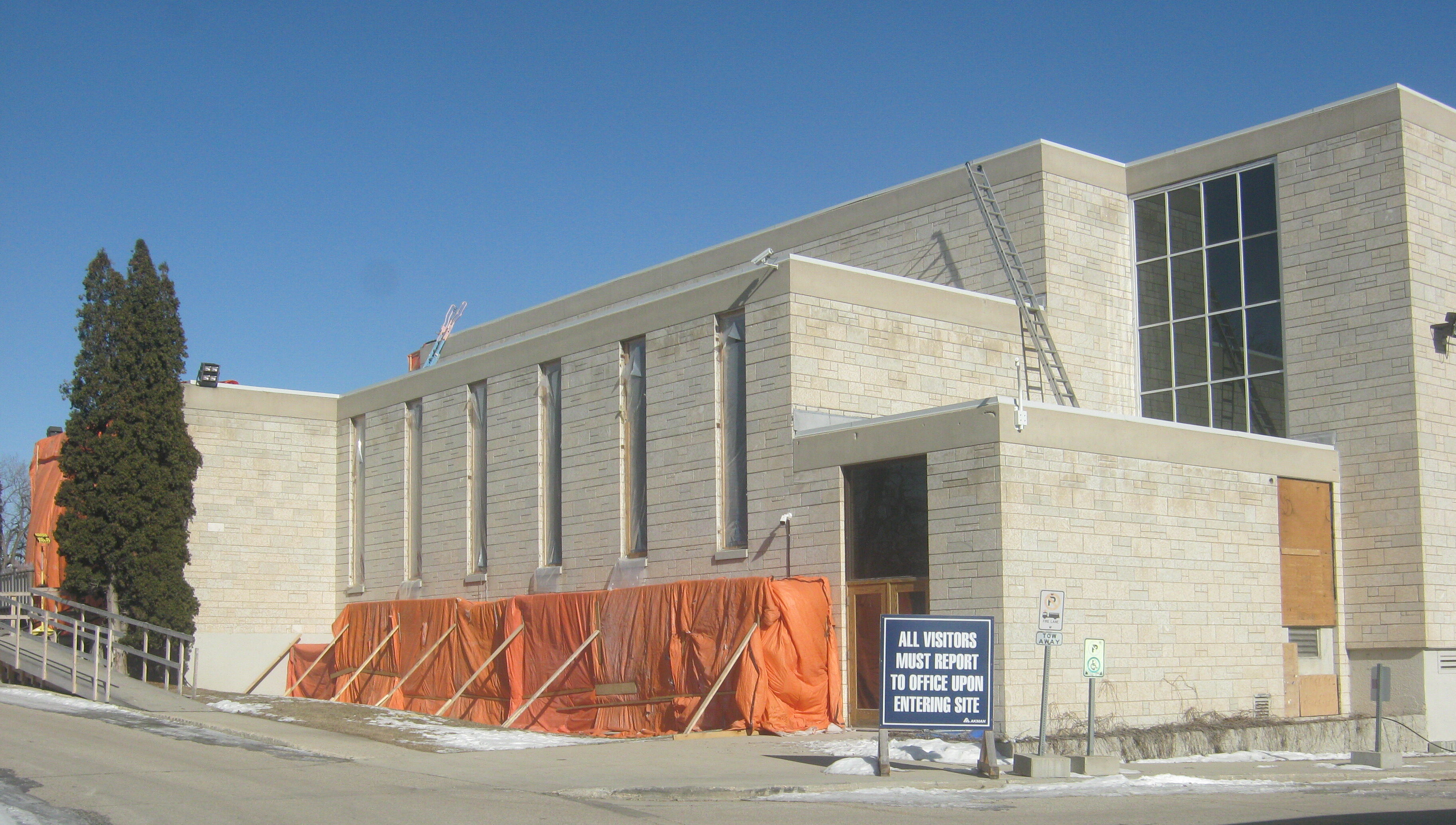With the merger last summer of the three struggling north Winnipeg Orthodox minyans, the relocation of Etz Chayim, the city’s largest Conservative congregation to the south end, and the return of the Shaarey Zedek congregation to its 72-year-old building following a major expansion, Winnipeg’s Jewish community has seen its largest transformation in over 20 years.
The moves, mergers and renovation reflect the shift in Winnipeg’s population from the north end to the south and a need to make some long overdue renovations.
It has been 20 months since Shaarey Zedek, a Conservative synagogue, closed its doors to make way for the first major upgrade to the synagogue building in over 50 years. The congregation has been davening in south Winnipeg since 1952.
The work is expected to be completed in time for the High Holidays in the fall. In the meantime, the members have been conducting synagogue affairs from Temple Shalom and splitting the davening between there and the Asper Campus.
“We have undertaken a complete renovation of our entire building,” said Rena Secter Elbaze, Shaarey Zedek’s executive director. “The only area that will be untouched are our Arks and bimah.”
The first phase of the work, which involved the demolition and asbestos remediation of the project spaces is complete, followed by roof renovations and the installation of a new HVAC system. A new feature of the building is a childcare centre with four spots for infants and 28 for toddlers.
To pay for the upgrades, Shaarey Zedek launched a $17-million fundraising program. The synagogue has reached 80 percent of its goal, including a $3 million grant from the provincial government, Elbaze said. “This is the first fundraising campaign that we have embarked on since our last expansion in 1972.”
Shaarey Zedek has a membership of about 750 families. Holiday and Shabbat services—which have been livestreamed for several years now—have a following throughout North and South America, Elbaze says.
She adds that the renovated and upgraded synagogue will have the space to compete for larger social events such as gala evenings and large-scale luncheons.
Congregation Etz Chayim will be moving into its new building within a couple of weeks. Etz Chayim was formed July 1, 2022, as a result of a merger among the three largest north Winnipeg synagogues and has been housed in what was the Rosh Pina Synagogue—the largest and oldest of three former congregations.

Discussions have been ongoing for several years about a move south. While once the bulk of the Jewish population used to live in north Winnipeg, the Jewish population in the area has dwindled to about 800 compared to over 5,000 in the River Heights and Tuxedo areas in south Winnipeg.
Etz Chayim president Avrom Charach notes the building needed a lot of upgrading and with 70 percent of members and 80 percent of younger members living south, it made more sense to spend the money to buy and renovate a building in south Winnipeg.
“We were looking for a location within a ten-minute drive from most of our members,” Charach said.
The congregation was able to purchase a building that had been the Khartoum Shriners’ headquarters and sold their former building to an Eritrean Christian congregation.
The reconfigured new location was originally supposed to have been re-opened in early November. Charach reports that the work is now almost complete and the congregation should be able to move in by mid-March. For the past few months, the congregation has been holding services at the Asper Campus.
The seating capacity in the sanctuary at the new location is about 400. While the number of people attending High Holiday services used to be between 800 and 1,000, Etz Chayim could accommodate the overflow by pushing aside the partition separating the sanctuary and the social hall. The new Etz Chayim doesn’t have a social hall.
However, since Etz Chayim, like Shaarey Zedek, livestreams its services, the pressure for seats is lessened.
“Our members are really excited about this move,” says Charach. “A lot of members are telling us that now that the shul is closer to where they live, they are more likely to attend services.”
Back in the North End, last summer the three remaining, and struggling, Orthodox synagogues came to an agreement to merge their services at the Chavurat Tefila Synagogue—the shul that is the most accessible for congregants who walk to shul on Shabbat.
Separately, none of the three including the Talmud Torah Beth Jacob and the House of Ashkenazi, were usually able to attract the ten men needed for a Shabbat minyan.
For the past several years, the 115-year-old Ashkenazi has only been able to offer services on High Holidays and Thursdays. The Talmud Torah was only managing the occasional Shabbat minyan.
Several years ago, these two congregations reached an agreement to support each other—with Ashkenazi members attending the Talmud Torah for Shabbat and some Talmud Torah members helping out with the Ashkenazi’s morning minyans. But the number of regular attenders has continued to decline as people have aged or moved elsewhere.
As for the Chavurat Tefila, the synagogue had been closed since the pandemic lockdown in October 2020.
The catalyst that brought the three congregations together was a proposal to sell the Chavurat Tefila. Rocky Kravetsky, who has connections to all three synagogues, took it upon himself to bring the three congregations together.

“The key,” says Kravetsky, “was being able to persuade the three congregations that their interests and the future of a north end Shabbat minyan were best served by working together.”
The new North End Minyan began holding Shabbat services at the beginning of August and, so far, with attendance of between 15 and 20 people, the initiative seems to be working out well.
There are now plans to sell the Talmud Torah while the future of the Ashkenazi is still to be determined.
